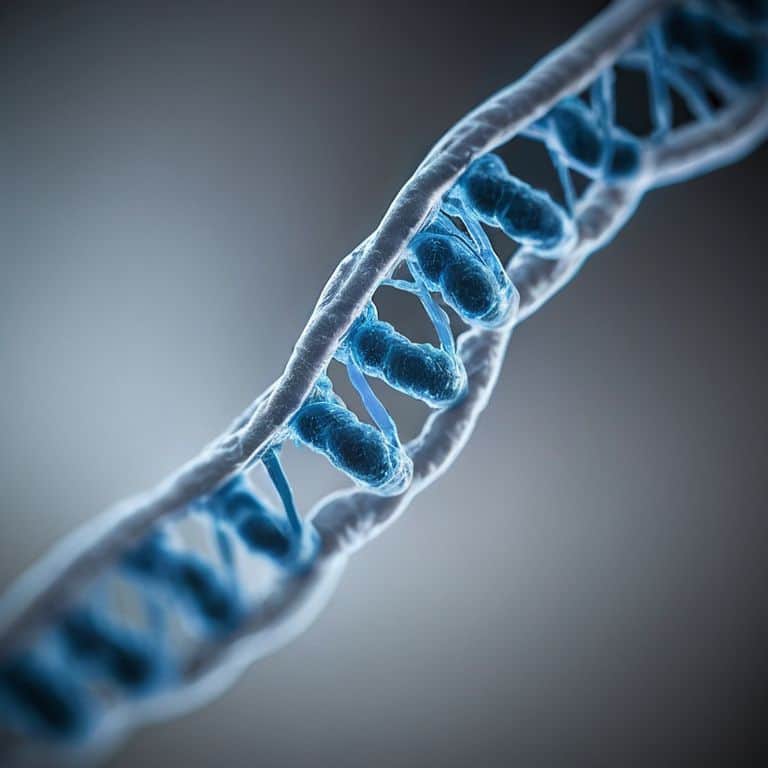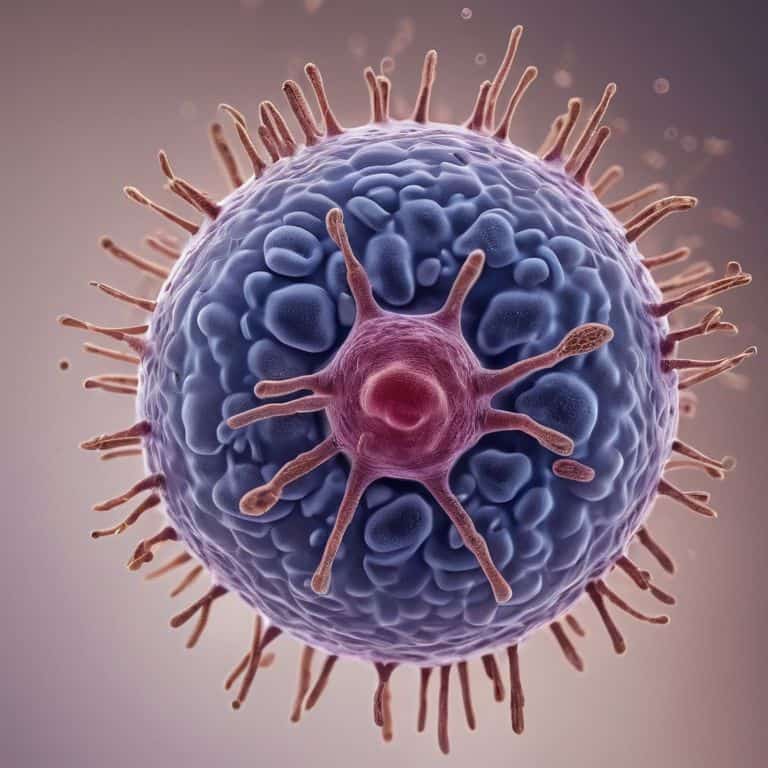As I sit here, sipping my gourmet coffee and reflecting on my years as an emergency room doctor, I’m reminded of the countless times I’ve seen the science of aging play out in the lives of my patients. But what really gets my frustration brewing is the plethora of expensive, overcomplicated products and treatments that promise to reverse or halt the aging process. I’ve lost count of how many times I’ve had to debunk these myths for my patients, explaining that there’s no magic pill or cream that can turn back the clock. It’s time to separate fact from fiction and explore the real science behind aging.
In this article, I promise to cut through the hype and provide you with evidence-based advice on understanding and navigating the science of aging. As someone who’s passionate about debunking medical misinformation, I’ll share my personal experiences and insights gained from years of practicing medicine and reading pre-prints of clinical trials. My goal is to empower you with credible information, so you can make informed decisions about your health and wellbeing. I’ll break down complex biological processes into simple, easy-to-understand concepts, and provide you with a nuanced perspective on the latest research and findings in the field of aging.
Table of Contents
Decoding the Science of Aging

As I delve into the complexities of aging, I find myself fascinated by the epigenetic clock, which measures biological age by analyzing methylation patterns on our DNA. This concept has led me to explore how our lifestyle choices can influence our epigenetic clock, potentially slowing down or speeding up the aging process. For instance, research has shown that a healthy diet and regular exercise can help maintain a younger epigenetic age.
The relationship between telomere shortening mechanisms and aging is another area that intrigues me. Telomeres, the protective caps on our chromosomes, shorten as we age, leading to cellular senescence. Understanding the factors that contribute to telomere shortening, such as oxidative stress and inflammation, can provide valuable insights into developing strategies for promoting healthy aging. By exploring these mechanisms, we may uncover new ways to mitigate the effects of aging on our cells.
My interest in mitochondrial dysfunction in aging has also led me to investigate the role of nutrition in supporting mitochondrial health. The emerging field of nutrigenomics and longevity holds promise for personalized approaches to promoting healthy aging through tailored dietary interventions. By examining the interplay between genetics, nutrition, and aging, we may discover novel ways to support mitochondrial function and overall well-being as we age.
Epigenetic Clocks Times Impact on Cells
As I delve into the intricacies of aging, I find myself fascinated by epigenetic changes, which occur when our lifestyle and environment influence gene expression. This concept is crucial in understanding how our cells age, and it’s an area I’ve explored extensively in my research.
The biological clock ticks away, marking time’s passage on our cells, and it’s a phenomenon that has significant implications for our overall health and well-being.
Telomere Shortening Agings Silent Assassin
As I delve into the intricacies of aging, I’m reminded of the delicate balance within our cells. Telomere shortening is a process that has fascinated me since my days as an emergency room doctor. It’s a mechanism where the protective caps on the ends of our chromosomes, called telomeres, gradually shorten as we age.
The biological clock ticks away, and with each cell division, our telomeres shorten, making them more susceptible to damage. This silent assassin of aging can lead to cellular senescence or even cell death, contributing to the overall aging process.
Unraveling Agings Mysteries

As I delve deeper into the complexities of aging, I find myself fascinated by the epigenetic clock and aging. This intricate mechanism, which affects how our genes are expressed over time, is a crucial aspect of understanding why our bodies change as we grow older. I’ve spent countless hours pouring over research studies, trying to grasp the nuances of this process.
One of the most significant factors contributing to aging is mitochondrial dysfunction. As our cells’ energy-producing structures deteriorate, they can no longer function efficiently, leading to a decline in overall health. This deterioration is often accompanied by telomere shortening mechanisms, which silently accelerate the aging process. I’ve seen this firsthand in my patients, and it’s a sobering reminder of the importance of proactive care.
My own experiments with nutrigenomics and longevity have also shed light on the aging and inflammation relationship. By analyzing how specific nutrients interact with our genes, I’ve gained valuable insights into the ways we can potentially mitigate the effects of aging. While more research is needed, I’m excited about the prospect of senolytic therapy for age-related diseases, which targets and eliminates damaged cells that contribute to aging.
Mitochondrial Dysfunction Energys Role
As I delve into the intricacies of aging, I’m reminded of my own experiences with mitochondrial dysfunction in my patients. It’s astonishing how these tiny powerhouses, responsible for generating energy within our cells, can impact our overall health. When mitochondria don’t function properly, it can lead to a range of issues, from fatigue to more severe diseases.
In my own biohacking experiments, I’ve seen how optimal energy production can make a significant difference in overall well-being. By focusing on lifestyle changes that support mitochondrial health, such as regular exercise and a balanced diet, we can potentially slow down the aging process and maintain our energy levels as we age.
Senolytic Therapy Targeting Age Related Diseases
As I delve into the latest research on aging, I’m fascinated by the concept of senolytic therapy, which aims to remove senescent cells that contribute to age-related diseases. This approach has shown promising results in reducing inflammation and improving overall health.
By targeting these problematic cells, senolytic therapy holds potential in preventing or treating conditions like osteoarthritis, atherosclerosis, and even certain types of cancer.
Aging Wisely: 5 Evidence-Backed Tips to Turn Back the Clock
- Adopt a balanced diet rich in fruits, vegetables, and whole grains to support cellular health, as studies have shown that a Mediterranean-style diet can reduce the risk of age-related diseases
- Engage in regular physical activity, such as long-distance cycling, to promote mitochondrial function and boost telomerase activity, which can help maintain telomere length
- Prioritize sleep and stress management, as chronic stress can accelerate epigenetic aging and telomere shortening, with research suggesting that 7-9 hours of sleep per night is ideal for adults
- Stay hydrated and limit exposure to environmental toxins, which can cause oxidative stress and damage to cellular components, including mitochondria and telomeres, as evidenced by studies on the impact of pollution on human health
- Consider incorporating polyphenol-rich foods, such as green tea and dark chocolate, into your diet, as these compounds have been shown to have anti-aging effects by activating cellular pathways that promote longevity and reduce inflammation
Key Takeaways: Unraveling the Complexity of Aging
I’ve learned through my research and experience that understanding the science of aging is crucial for developing effective strategies to promote healthy aging, and it’s essential to separate fact from fiction in the realm of anti-aging therapies
Emerging areas like epigenetic clocks, telomere shortening, mitochondrial dysfunction, and senolytic therapy hold promise for addressing age-related diseases, but it’s vital to approach these topics with a critical and nuanced perspective, recognizing both their potential and limitations
By staying informed about the latest scientific discoveries and advancements in the field of aging, individuals can make empowered decisions about their health and wellbeing, and it’s my goal as a medical doctor and science journalist to provide accurate, evidence-based information to support this process
Unraveling Time's Secrets
Aging is not just a natural process, but a complex puzzle that we’re still trying to solve – and the pieces are not just genetic, but also environmental, lifestyle, and perhaps most intriguingly, a matter of cellular memory.
Dr. Anya Sharma
Embracing the Complexity of Aging

As I reflect on the science of aging, I’m reminded of the intricate web of factors that contribute to this complex process. From epigenetic clocks to telomere shortening, mitochondrial dysfunction, and senolytic therapy, it’s clear that aging is a multifaceted phenomenon that can’t be reduced to a single cause or cure. By understanding these mechanisms, we can begin to unpack the mysteries of aging and develop more effective strategies for promoting healthy longevity. Whether through lifestyle interventions, medical therapies, or a combination of both, the key is to approach aging with a nuanced and evidence-based perspective.
As we move forward in our journey to understand the science of aging, let’s not lose sight of the human stories behind the research. Let’s remember that aging is not just a biological process, but a deeply personal and emotional one. By embracing this complexity and embracing the unknown, we can work towards creating a future where aging is not something to be feared, but something to be understood and valued. As I often say to my patients, ‘aging is not a destination, but a journey’ – and it’s one that we can navigate with courage, curiosity, and a commitment to evidence-based wisdom.
Frequently Asked Questions
What role do lifestyle factors, such as diet and exercise, play in influencing the rate of aging?
As I see it, lifestyle factors like diet and exercise significantly impact aging. A balanced diet rich in antioxidants and regular physical activity, like my own long-distance cycling, can help mitigate cellular damage and promote healthy cellular function, potentially slowing down the aging process.
Can the science of aging be applied to develop effective treatments for age-related diseases?
As a medical doctor, I’ve seen the devastating impact of age-related diseases. Fortunately, our understanding of aging’s underlying mechanisms can indeed inform treatment development. By targeting hallmarks of aging, such as cellular senescence and mitochondrial dysfunction, researchers are exploring innovative therapies to combat conditions like cancer, Alzheimer’s, and osteoarthritis.
How close are we to being able to accurately predict an individual's biological age using epigenetic clocks or other biomarkers?
As a medical doctor, I’m excited about the progress in epigenetic clocks, which can estimate biological age with impressive accuracy. Research suggests we’re getting closer to reliable predictions, with some studies showing up to 90% accuracy. However, more work is needed to standardize and refine these methods for individualized predictions.




